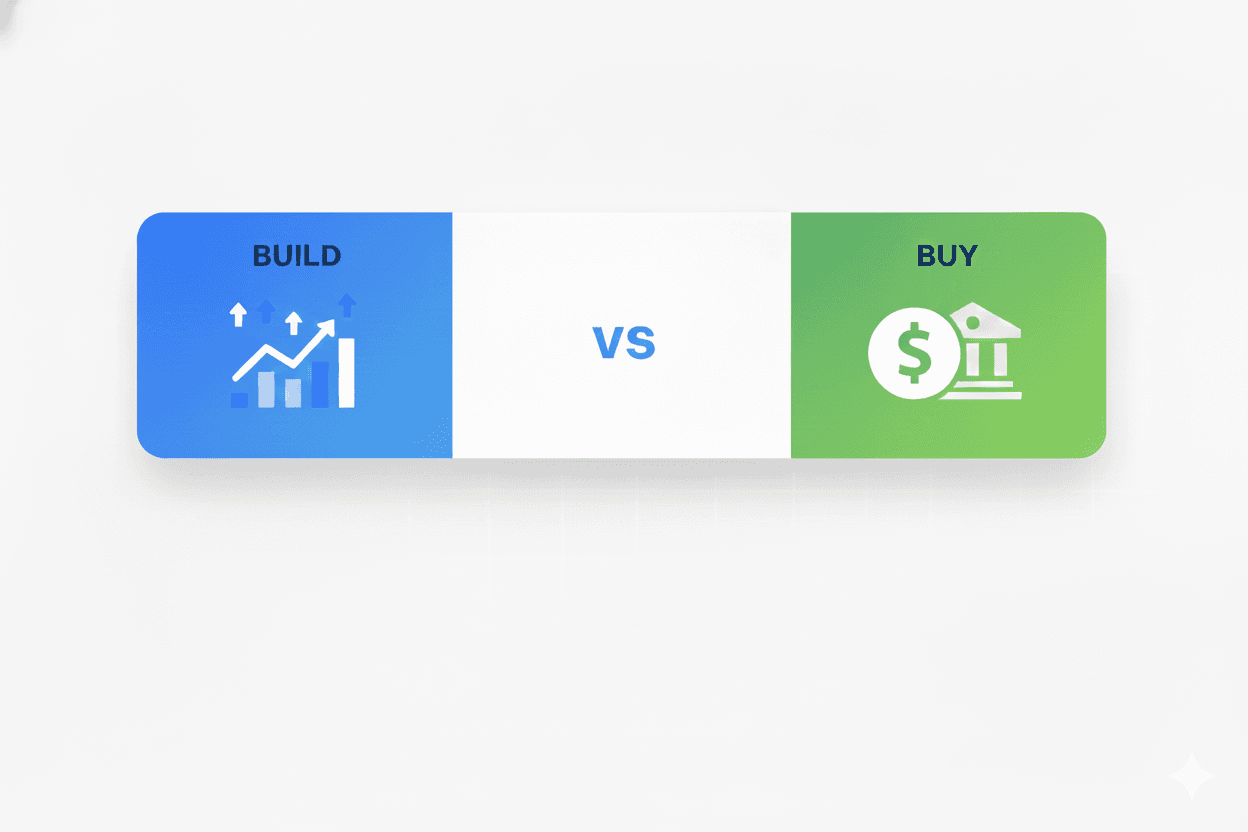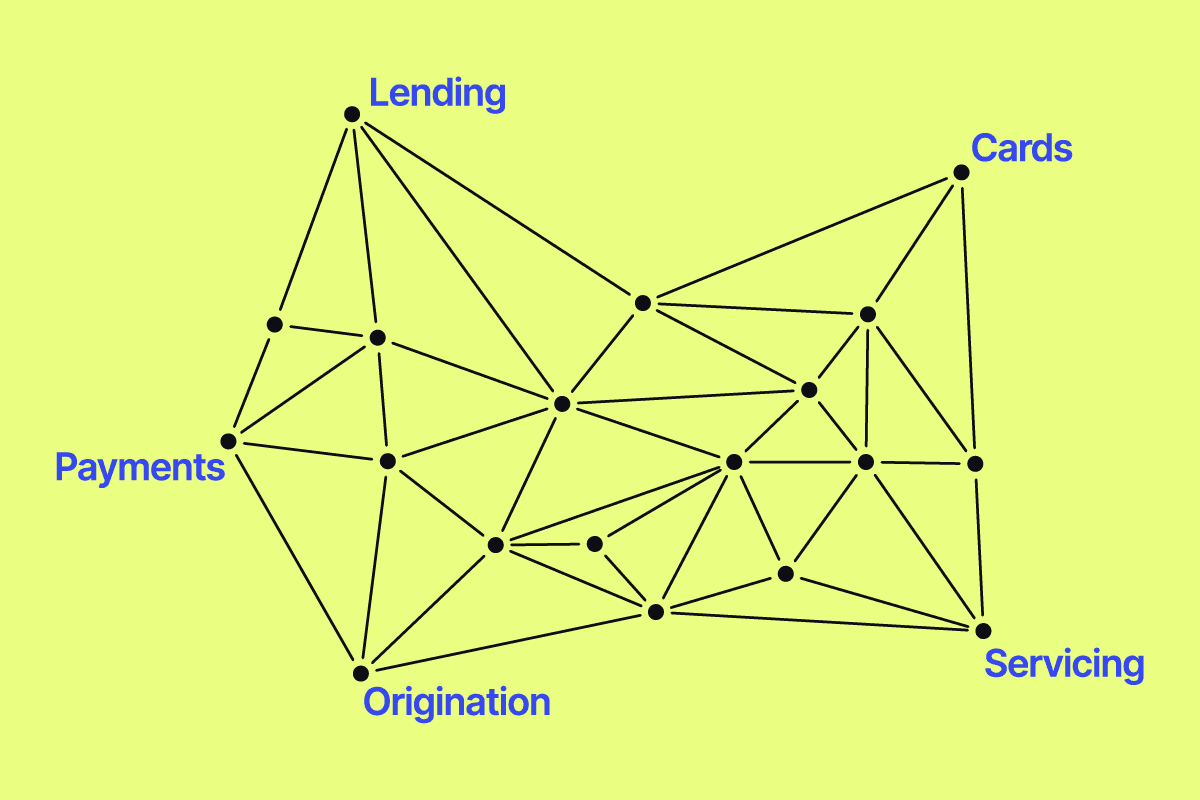Loan management software is no longer an option for B2B lenders; it’s essential to operating their core business. The right system helps on the backend by streamlining operations and improving decision-making, but it can also enhance the frontend borrower experience.
This article will guide lenders through choosing a loan management system that will help them build a thriving commercial lending program. We’ll explore critical decision criteria for factors across the loan lifecycle, including compliance and security concerns.
At Canopy, we believe that a loan management system can significantly impact your business by helping you master the complexities of commercial lending. Whether or not you choose Canopy as the operating system for your loan program, we hope this guide will help you.
Comparing core features across loan management platforms
Thinking about how loan management software can help you across each stage of the lending process can help you make the right decision. Each company and industry has its own considerations across origination, servicing, and portfolio management.
Here’s a breakdown of key considerations across the lending lifecycle:
01
Origination
Product Development and Structuring
Assisting in developing new loan products is one of the main reasons lenders switch to a new loan management system. Often, their homegrown or existing system is keeping them pigeon-holed in one particular product without the ability to easily expand.
Assessing the platform’s ability to support the development of various loan products is crucial for these lenders. This includes the flexibility to define loan terms, interest rates, repayment schedules, and other parameters. The platform should also facilitate the integration of loan products into existing user workflows.
You should also consider the type of loan products you want to offer. Canopy, for example, helps business lenders create products for a variety of use cases that include working capital loans, secured loans, commercial credit cards, lines of credit, merchant cash advances, installment loans, and BNPL (buy now, pay later).
Application and Underwriting
Loan applications have historically been a slow, manual process, but in the modern age, borrowers have less tolerance for antiquated processes. The platform should streamline the loan application process, allowing borrowers to easily submit applications and provide necessary documentation in minutes.
It should also support efficient underwriting processes, including credit scoring, risk assessment, and decision-making. This will likely be another area where integrating with other systems, such as underwriting decisioning engines, is important.
Collateral Management
If you offer secured loans, the platform should enable you to register and manage collateral easily and effectively. This means creating and tracking collateral records, tracking collateral value and LTV, and managing liens.
Some lenders are getting into more flexible types of collateral, such as cryptocurrency assets, art, or private equity. For these assets with variable value, it’s important to have a modern digital collateral management system that can easily handle frequent valuation changes with automated collateral management.
02
Servicing
Servicing is the lifeblood of your loan program, where most of your accounts spend most of their time. A quality servicing system can help you increase repayment rates and improve the long-term health of your portfolio.
Loan Administration
Manual loan administration is a blast from the past. Modern platforms should automate loan servicing tasks, such as payment processing, billing, and statement generation. They should also provide tools for managing loan modifications, renewals, and payoffs.
Borrower communication and self-service
Communicating with borrowers where they are and in a way they will resonate with is a key component of effective loan servicing. Lenders should evaluate a platform’s ability to facilitate personalized communication with borrowers through various channels.
Platforms should also offer self-service options, allowing borrowers to access loan information, make payments, and request support online. This will cut down on your customer support time and costs.
Flexibility and automation
Servicing workflows come in various shapes and sizes, based on various triggers. For example, a customer with a payment due in three days, who is not set up for autopayment and prefers email communication, will have a specific workflow to match their preferences and remind them of the upcoming payment with preferred payment options.
Platforms should allow for flexibility in configuring automated servicing workflows to match any type of customer. This will help lenders automate their routine servicing tasks while meeting diverse borrower needs.
See how Canopy Connect can help lenders easily set up automated servicing workflows that can be triggered for any kind of event.
03
Portfolio monitoring and risk management
Early warning systems
Risk reduction is another important factor for most lenders when considering a new system. Platforms should include tools for both monitoring loan performance and identifying potential risks. This could involve lien alerts, covenant tracking, past-due reports, and automated alerts to give lenders an early warning before accounts become delinquent.
Reporting and analytics
Reports are the easiest way to communicate how your loan program is performing and find areas where you may be at risk. Evaluate whether a system has the robust reporting capabilities you need to track key metrics, analyze portfolio performance, and generate reports for internal and external stakeholders. The platform should provide real-time insights and facilitate data-driven decision-making.
Technical considerations for loan management software
Evaluating core features across the lending lifecycle is key to making an informed decision on the software that best supports your business goals. However, there are also technical considerations that live outside of specific parts of the loan lifecycle that should be considered.
-
Deployment flexibility
The cloud-based vs on-premises server model is a debate from the 2010s, as most software, including loan management systems, operates as a cloud-based software-as-a-service (SaaS) model. However, there may be some systems that still offer on-premises solutions, or you may be comparing against a homegrown system that is on-premises. There are also some hybrid models where the software sits on an on-premises server but can be accessed anywhere via a self-hosted cloud.
Cloud-native solutions offer scalability and resilience compared to on-site hosting, which is sensitive to downtime and disruption from situations like power outages and natural disasters.
-
Integration capabilities
Seamless integration with existing systems is essential for efficient data exchange and workflow automation. APIs and webhooks facilitate integration with other applications, such as your CRM and accounting software.
Compatibility with your current tech stack and the ability to integrate with third-party services (e.g., credit bureaus, payment processors) are crucial. Some software enables this via in-app configuration, while others require customization.
Customization is more resource-dependent, requiring modification of the software’s code and a developer to set up and support the integrations. While customization may be able to offer more flexibility, it is time-consuming and costly. Configuration is much more straightforward, as it is done within the software without a developer being needed.
Canopy Connect enables lenders to easily set up integrations to their other systems, such as payment processing and their CRM, using configurations within the software. Lenders can also set up workflows based on actions triggered by outside systems (such as missed payments or upcoming documentation requirements).
-
Vendor specialization
Consider whether your vendor offers a general-purpose LMS or specializes in your particular industry or lending type. For example, if you’re an embedded SaaS lender, you might want a more flexible program that’s easy to integrate with outside systems.
Canopy, for example, is designed for SaaS and other non-bank lenders to easily set up loan programs in areas like secured lending, working capital, commercial credit cards, and more.
-
Data security and architecture
Lenders hold sensitive information about their borrowers’ identities and finances, so robust data security is crucial. Evaluate encryption, access controls, and compliance certifications (e.g., ISO 27001). Vendors should also be able to show that they adhere to data privacy regulations (e.g., GDPR, CCPA).
How the software stores, manages, organizes, and accesses data (i.e., the data architecture) is also important. The system should ensure scalability by enabling growth, reliability by ensuring data is always available and accurate, and data integrity by maintaining consistency and accuracy throughout the loan lifecycle.
Compliance must-haves
Lastly, compliance is another critical aspect that lenders must consider, as they are in one of the most regulated industries. Vendor software should include the following to support adherence to relevant regulatory requirements.
-
Audit trails
An audit trail logs every activity that happens inside the system. Maintaining a comprehensive audit trail is necessary for ensuring accountability on everything related to loans. Regular audits and reviews of compliance practices are essential.
-
Data security compliance
We mentioned data security above as a technical requirement, but it is equally important for compliance. Vendors must meet industry standards and employ stringent security measures to comply with privacy, data protection, and usury laws, including GLBA, GDPR, and CCPA.
-
AML/KYC
Bank Secrecy Act (BSA) and Anti-Money Laundering (AML) regulations are designed to detect and prevent money laundering and terrorist financing. Lenders must perform Know Your Customer (KYC) procedures to comply with them. The KYC process includes verifying the identity of borrowers, and for AML, it includes checking their identities against government watchlists, among other requirements.
Your loan management system likely isn’t an identity verification platform, but it should be able to easily integrate with your KYC/AML system via API so you can easily record everything you need under one system of record.
There’s certainly a lot to consider when choosing a new loan management system, but taking your time to evaluate core features, technical considerations, and compliance capabilities will help set you up for long-term success. We hope this guide can help you determine what you should be evaluating, regardless of whether or not you choose Canopy.
Canopy is a loan management system that’s designed primarily for SaaS, non-bank lenders, and smaller financial institutions to create the next generation of innovative commercial lending products. Learn more about our core lending platform.





